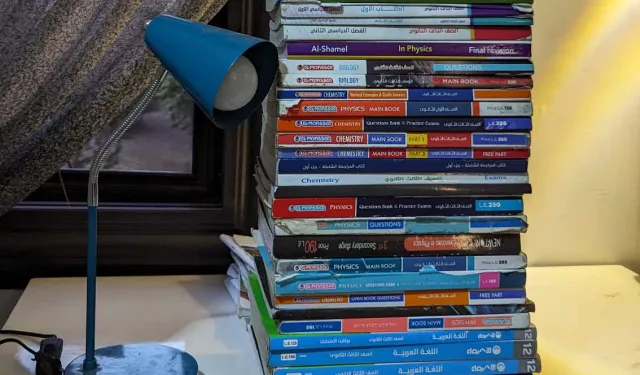The cost of supplementary school textbooks in Egypt has climbed between 10 and 20% over the past year, depending on the publisher. Meanwhile, stationery prices have largely remained stable and in some cases dropped by as much as 10%, according to four officials from the Federation of Egyptian Industries.
Supplementary books are privately published study guides and practice materials sold outside the official state curriculum. Widely used by students to prepare for exams, they have become a parallel industry to government-issued textbooks, despite periodic efforts by the Ministry of Education to restrict their use.
Ahmed Gaber, a member of the Printing and Packaging Division at the FEI, said the price increase was driven by higher production costs, particularly labor and electricity.
Many publishers and printing houses, Gaber told Al Manassa, chose to delay printing this year to avoid losses after the Ministry of Education announced curriculum revisions.
Last month, the ministry issued an official circular outlining those changes, creating confusion among students and teachers alike.
At the time, Education Minister Mohamed Abdel Latif warned parents against buying commercially available supplementary books until the updated curricula were formally released. On Sunday, he went further, banning the circulation or use of any non-official textbooks in schools.
Amr Khedr, head of the General Division of Paper Traders at the Federation of Egyptian Chambers of Commerce, also confirmed that textbook prices were up from last year.
He pointed out, however, that imported paper prices had fallen about 40% over the past seven months, reaching 40,000 Egyptian pounds per ton, while local paper remained between 40,000 and 44,000 pounds. The drop, he said, has not translated into cheaper books because of other rising costs such as energy, labor, and transport.
Barakat Safa, deputy head of the Stationery Division at the Cairo Chamber of Commerce, linked the price hikes not just to usual costs but also to the sudden curriculum change, which forced printers to redo entire print runs.
However, Safa added that some stationery items had become cheaper thanks to the stronger pound and stable raw material prices.
He emphasized that greater reliance on local manufacturing has helped keep prices steady. “Domestic production now covers roughly 60% of market needs, with imports filling the rest. Egypt now produces about 90% of its notebooks and exercise pads, and 70% of ballpoint pens, though just 30% of pencils,” he said.
Last month, the dollar fell to 49.1 pounds — its lowest level since October, when it had reached 48.8. On Sunday, the currency dropped further to 48.38, according to the Central Bank.
Last year, however, publishers suffered losses of nearly 50 million pounds after the education minister introduced a new high school system just one month before the academic year began. By then, many supplementary textbooks had already been printed and some sold, according to Mohamed El-Safty, secretary of the Stationery Division at the Cairo Chamber of Commerce.
